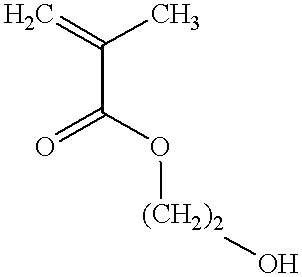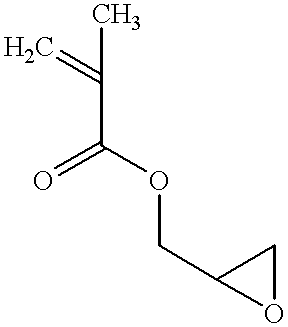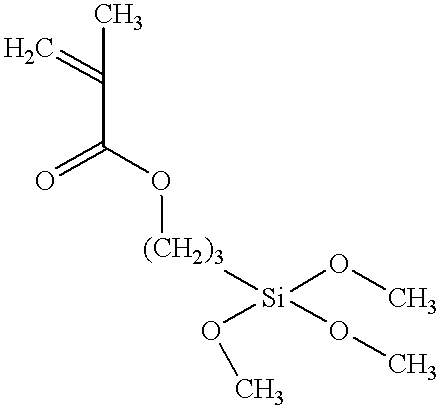Method for making positive working printing plates from a latex
a printing plate and positive technology, applied in the direction of plate printing, plate printing, lithography, etc., can solve the problems of low printing endurance of said printing plate, large amount of ink needed in this method, and poor resolution of printed images at shadow area or reversed lines, etc., to achieve excellent lithographic printing plate and high printing endurance
- Summary
- Abstract
- Description
- Claims
- Application Information
AI Technical Summary
Benefits of technology
Problems solved by technology
Method used
Image
Examples
Embodiment Construction
Preparation of the latices
Seven latices were prepared all having 20% by weight in water of copolymer. Their composition is given in table 1.
These latices were imagewise jetted on an hydrophilic support, said support being anodized aluminum or a layer of hardened polyvinyl alcohol on polyethylene terephthalate. These supports were prepared as follows:
Preparation of the Anodized Aluminum Support
A 0.30 mm thick aluminum foil was degreased by immersing the foil in an aqueous solution containing 5 g / l of sodium hydroxide at 50.degree. C. and rinsed with demineralized water. The foil was then electrochemically grained using an alternating current in an aqueous solution containing 4 g / l of hydrochloric acid, 4 g / l of hydroboric acid and 5 g / l of aluminum ions at a temperature of 35.degree. C. and a current density of 1200 A / m.sup.2 to form a surface topography with an average center-line roughness Ra of 0.5 .mu.m.
After rinsing with demineralized water the aluminum foil was then etched with...
PUM
| Property | Measurement | Unit |
|---|---|---|
| Percent by mass | aaaaa | aaaaa |
| Angle | aaaaa | aaaaa |
| Temperature | aaaaa | aaaaa |
Abstract
Description
Claims
Application Information
 Login to View More
Login to View More - R&D
- Intellectual Property
- Life Sciences
- Materials
- Tech Scout
- Unparalleled Data Quality
- Higher Quality Content
- 60% Fewer Hallucinations
Browse by: Latest US Patents, China's latest patents, Technical Efficacy Thesaurus, Application Domain, Technology Topic, Popular Technical Reports.
© 2025 PatSnap. All rights reserved.Legal|Privacy policy|Modern Slavery Act Transparency Statement|Sitemap|About US| Contact US: help@patsnap.com



